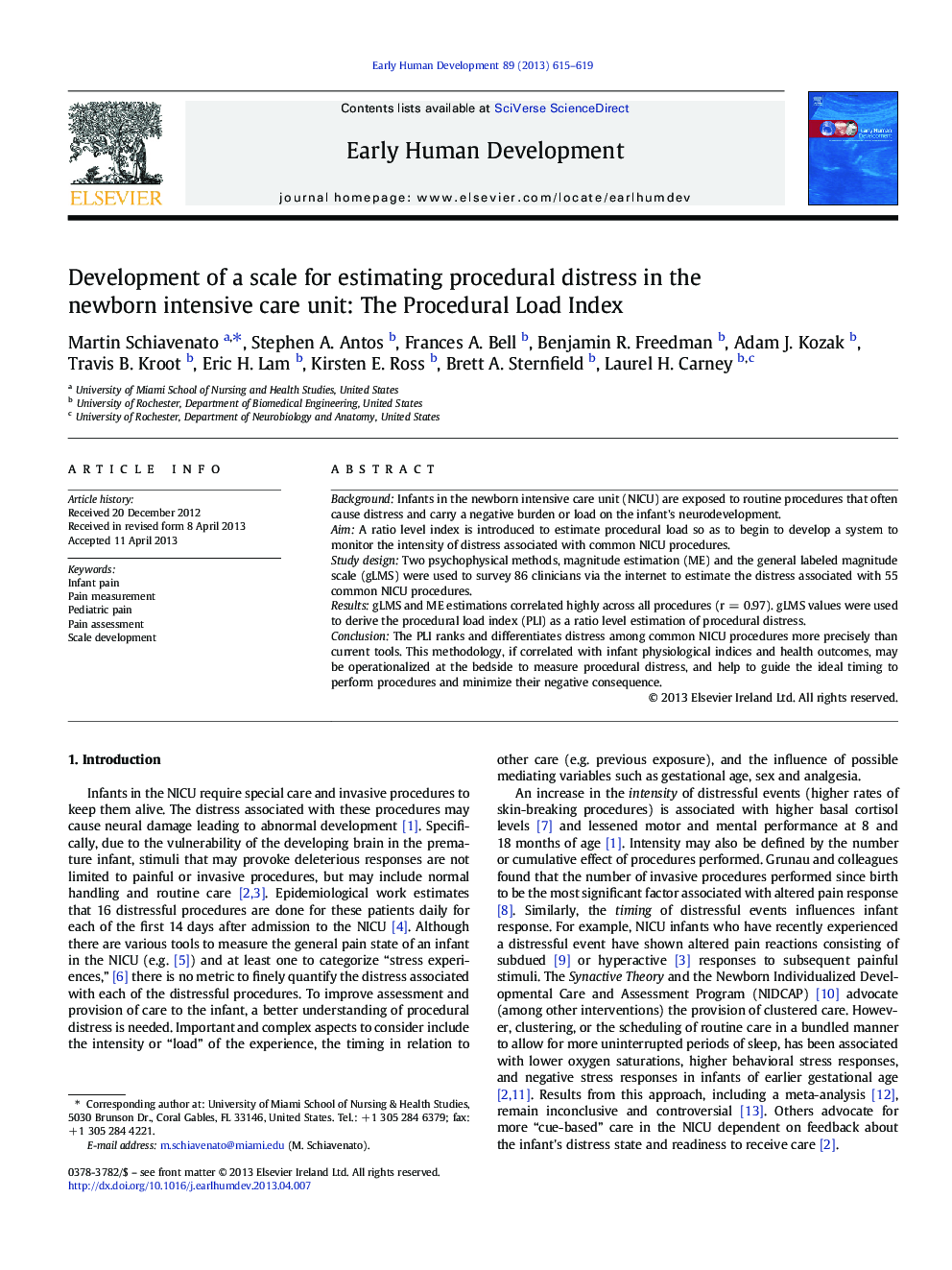| Article ID | Journal | Published Year | Pages | File Type |
|---|---|---|---|---|
| 6172283 | Early Human Development | 2013 | 5 Pages |
BackgroundInfants in the newborn intensive care unit (NICU) are exposed to routine procedures that often cause distress and carry a negative burden or load on the infant's neurodevelopment.AimA ratio level index is introduced to estimate procedural load so as to begin to develop a system to monitor the intensity of distress associated with common NICU procedures.Study designTwo psychophysical methods, magnitude estimation (ME) and the general labeled magnitude scale (gLMS) were used to survey 86 clinicians via the internet to estimate the distress associated with 55 common NICU procedures.ResultsgLMS and ME estimations correlated highly across all procedures (r = 0.97). gLMS values were used to derive the procedural load index (PLI) as a ratio level estimation of procedural distress.ConclusionThe PLI ranks and differentiates distress among common NICU procedures more precisely than current tools. This methodology, if correlated with infant physiological indices and health outcomes, may be operationalized at the bedside to measure procedural distress, and help to guide the ideal timing to perform procedures and minimize their negative consequence.
